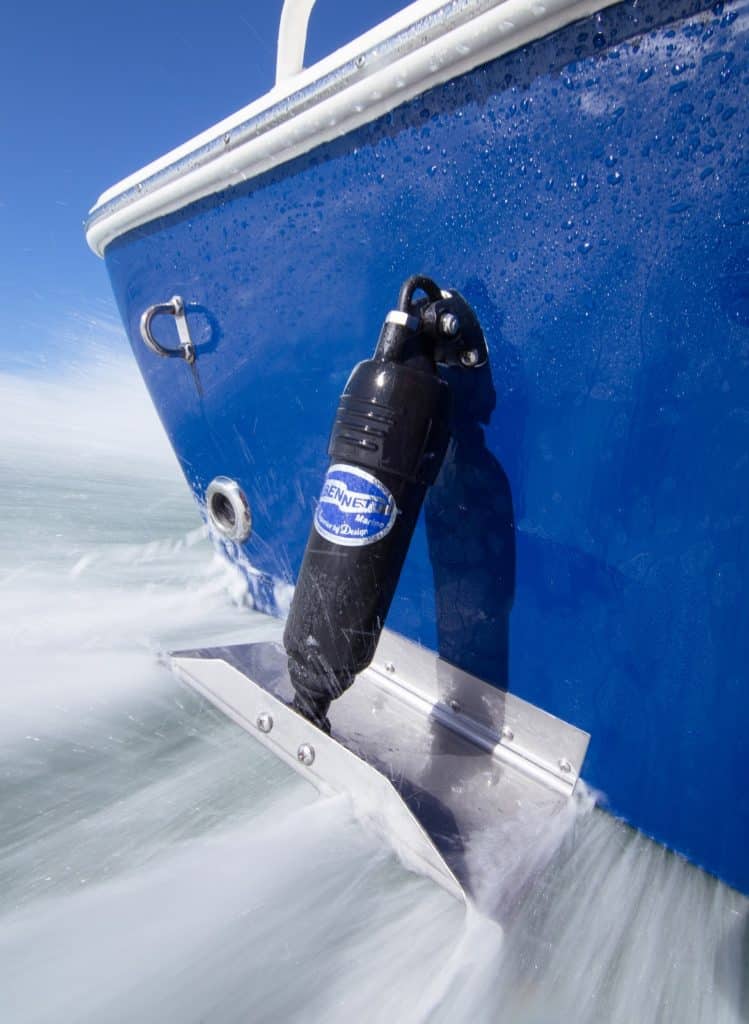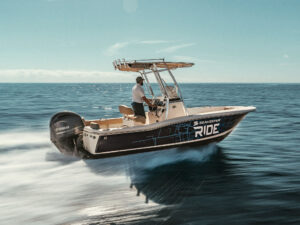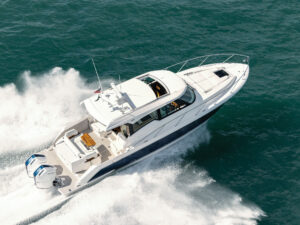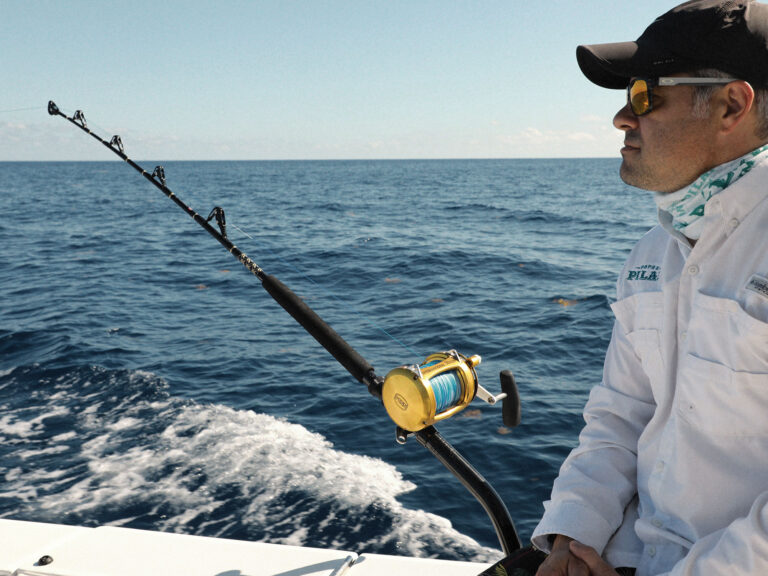
Do you really need trim tabs on your boat? We can sum up the answer with a yes, a no, or a maybe. Truth be told, just about every fishing boat out there would benefit to one degree or another by having trim tabs, but their importance shrinks along with a boat’s size. Few 16- or 18-foot boats have them, while few 28 or 30 footers do not.
What Are Trim Tabs?

Before we give a more in-depth non-answer to this question let’s make sure everyone is one the same page, because “what are trim tabs” and “how to use trim tabs” are heavily searched questions in the Googlesphere. (If you already know, just skip the next paragraph).
Trim tabs are metal plates installed in pairs on the back of the boat at the lowest point of the hull. They are lowered or raised with a control at the helm to adjust a boat’s running attitude, also called “trim,” while underway at moderate to high speeds.
When lowered, the force of water against the plates pushes the stern of the boat up, thus also forcing the bow of the boat down. Trim tabs can also be deployed unevenly to mitigate lateral (side-to-side) trim when a boat is listing one way or the other as it runs. Marine trim tabs are offered by a number of brands, including Bennett, Dometic, Lenco, Livorsi, and Mercury Racing.
Trim tabs aren’t unique to boats. They are actually found on many vehicles that travel through liquid or gaseous mediums like submarines and airplanes.
Are Trim Tabs Necessary?
So, do you need trim tabs? There are a number of factors that come into play when trying to answer this question. Part of the equation is cost. If you’re buying a small, inexpensive boat, the price of adding trim tabs (typically starting between $427 and $514) can prove substantial.
If you’re buying a twin-engine 30-foot center console, on the other hand, the added cost of tabs is easily absorbed into the bottom line. But along with cost, utility is a valid factor, as well. Larger boats are more likely to suffer from bow rise issues, and thus may benefit more from trim tabs. And on big boats you can’t merely shift a cooler or a passenger from side to side to adjust lateral trim by relocating weight, as you might on a small boat.
Now add in the additional factor of the boat’s design. Many unusual hulls (power catamarans jump out as an example) can be laterally trimmed quite effectively via engine drive trim, and besides, tabs are usually not feasible on cats. And flat- or nearly flat-bottom boats tend to offer so much lateral stability that the same may be true. If bow rise isn’t a factor on these sorts of boats, many would argue that trim tabs aren’t necessary.
The Maintenance Factor

You must also consider maintenance. In general, trim tabs are quite reliable, but that doesn’t mean they’re perfect. And when a tab fails it can be a bigger deal than one might think — one tab stuck in the full down position can make for a very wet and aggravating ride home when the down side is on the windward side of the boat and the water’s choppy.
So, do you really need trim tabs? It’s a judgement call. And hopefully, with what we’ve covered above you now have the knowledge you need to make that call correctly.
Want to Learn More?
For a more in-depth look at the latest in marine trim tab and other trim-adjusting systems, read this article on Sportfishing. You can also learn about Seakeeper’s new Ride system.









